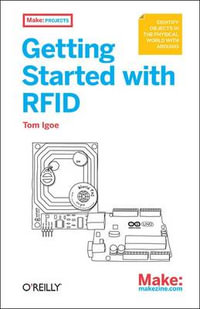| Introduction | p. 1 |
| Context | p. 3 |
| Motivation and Objectives | p. 5 |
| Approach | p. 9 |
| Preview of Contents and Contributions | p. 11 |
| The System Design Process | p. 17 |
| Design | p. 19 |
| Design as a Process | p. 20 |
| Application and Rationale of the Design Process | p. 24 |
| Microelectronic System Design | p. 29 |
| The Challenge of Complexity and Heterogeneity | p. 29 |
| State of the Art in Electronic System-Level Design | p. 31 |
| Synthesis of a Future-Proof Design Methodology | p. 34 |
| Crossdisciplinarity | p. 37 |
| Disciplines | p. 37 |
| Consequences for the Design Process | p. 38 |
| Consequences for the Designers and Design Methodologies | p. 39 |
| Codesign of Design Technology and Application | p. 41 |
| Conclusions | p. 42 |
| Specification for a Wireless LAN Terminal | p. 45 |
| Wireless Local Area Networks | p. 46 |
| Wireless LAN Between Early Radio and 4G | p. 48 |
| Requirements Analysis | p. 53 |
| Conclusions | p. 58 |
| Orthogonal Frequency Division Multiplexing | p. 60 |
| Indoor Propagation Characteristics | p. 60 |
| History and Principle of OFDM | p. 65 |
| Mathematical Model | p. 70 |
| Extension to a Practical System Model | p. 72 |
| Requirements Specification for a Broadband WLAN Terminal | p. 76 |
| Conclusions | p. 77 |
| Efficient Digital VLSI Signal Processing for OFDM | p. 79 |
| OFDM Baseband Signal Processing | p. 80 |
| Functional Requirements | p. 80 |
| State-of-the-Art Wireless OFDM Until 2001 | p. 85 |
| Distributed Multiprocessor Architecture | p. 86 |
| Directions for the Architecture Definition | p. 86 |
| On-Chip Data and Control Flow Architecture | p. 87 |
| Clocking Strategy and Low-Power Operation | p. 92 |
| Digital Signal Processing Modules | p. 96 |
| Latency-Aware Algorithm/Architecture Codesign: FFT | p. 97 |
| Flexibility-Driven Design: Symbol (De)Construction | p. 103 |
| Performance/Complexity-Aware Codesign: Equalization | p. 106 |
| Energy-Aware Codesign: Acquisition | p. 113 |
| Evaluation | p. 124 |
| Experimental Results | p. 124 |
| Testing and Application Demonstrators | p. 127 |
| Comparison with the State of the Art After 2001 | p. 130 |
| Conclusions | p. 131 |
| Digital Compensation Techniques for Receiver Front-Ends | p. 133 |
| Receiver Design | p. 135 |
| Receiver Architectures and Their Nonidealities | p. 135 |
| Our Contributions | p. 139 |
| Automatic Gain Control and DC Offset Compensation | p. 140 |
| A Survey of Existing Techniques | p. 142 |
| A Simple AGC Approach and Analysis of Preamble Properties | p. 143 |
| AGC/DCO Using Design-Time Information | p. 147 |
| Exploration of Gain Selection and LO-RF Isolation | p. 159 |
| Codesign of Automatic Gain Control and Timing Synchronization | p. 161 |
| Preamble Structure and Improved Synchronization Algorithm | p. 161 |
| Codesign of AGC and Timing Synchronization | p. 162 |
| Complexity Assessment | p. 163 |
| Performance Evaluation and Results | p. 163 |
| Codesign of Filtering and Timing Synchronization | p. 164 |
| Reasons for Performance Degradation | p. 165 |
| Mitigation | p. 165 |
| Synchronization Range and Filter Impulse Response | p. 165 |
| Analysis and Optimization Methodology | p. 166 |
| Results | p. 167 |
| An Integrated Digitally Compensated Receiver | p. 168 |
| RF Single-Package Receiver with Digital Compensation | p. 169 |
| Conclusions | p. 172 |
| Design Space Exploration for Transmitters | p. 175 |
| Power/Performance Optimization at the Link Level | p. 177 |
| Use Case-Driven Power/Performance Optimization | p. 178 |
| Extension to Crosslayer Link-Level Optimization | p. 190 |
| Run-Time Optimization for Optimum Power-Performance | p. 194 |
| Transmit Chain Setup | p. 194 |
| A Design-Time, Calibration-Time, and Run-Time Approach | p. 195 |
| Measurements | p. 196 |
| Results | p. 197 |
| Summary and Discussion | p. 198 |
| Methodologies for Transceiver Design | p. 201 |
| A Practical Digital Design Flow | p. 204 |
| A Digital Design Flow Based on OCAPI | p. 205 |
| Extensions to OCAPI During the Design Phase | p. 207 |
| Experience of (Re)Use | p. 208 |
| Mixed-Signal System Simulation | p. 212 |
| Design Challenges and State of the Art | p. 212 |
| Fast System-Level Front-End Simulation (FAST) | p. 213 |
| Extension to Mixed-Signal Cosimulation (FAST-OCAPI) | p. 214 |
| Efficient Mixed-Signal Modeling Techniques | p. 220 |
| Design-Time Run-Time Techniques | p. 227 |
| Multiobjective Design-Time Optimization | p. 227 |
| An Architecture for Run-Time Control Assisted by Design-Time Knowledge | p. 229 |
| Conclusions | p. 230 |
| Conclusions and Further Research | p. 233 |
| Contributions to Application Design | p. 234 |
| Contributions to Design Methodology and Technology | p. 235 |
| A Practical System-Oriented Mixed-Signal Design Flow | p. 236 |
| Methodologies for (Re)Configurable Mixed-Signal Design | p. 237 |
| Crossdisciplinary Approach in System Design | p. 238 |
| Further Research | p. 239 |
| Suggestions for Application Design | p. 240 |
| Suggestions for Design Methodologies and Technology | p. 243 |
| Impact Beyond Engineering | p. 245 |
| Glossary | p. 249 |
| Bibliography | p. 259 |
| Index | p. 287 |
| Table of Contents provided by Ingram. All Rights Reserved. |

























